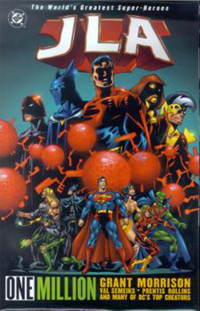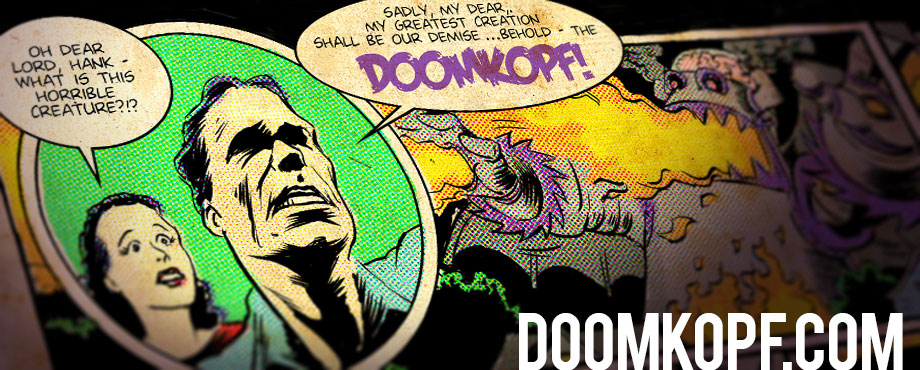JLA One Million
 By Grant Morrison (W) and others
By Grant Morrison (W) and others
Published by DC Comics. Cover price $19.99. Originally printed as DC 1,000,000 1-4, Green Lantern 1,000,000, Stannan 1,000,000, JLA 1,000,000, Resurrection Man 1,000,000, and Superman: The Man of Tomorrow 1,000,000
The Plot: The JLA of today and the JLA of the year 85,271 fight the threat of Vandal Savage and an evil sentient star, both in present day and the far future.
The Positives: The present day JLA is sent into the future near the beginning of the trade, and don’t reappear until the last quarter of the story. While this could be viewed as a negative, it gives the background players like Huntress, Steel, Big Barda, Plastic Man and the Blue Beetle, as well as the newly introduced Justice Legion A (the JLA of the future) a chance to shine in the spotlight. We’ve seen the Justice League save the world, the universe, and the whole of space and time over and over again. Seeing the B- and C-listers do it every now and again is a nice change of pace.
With all the creators working on this one story (twenty one writers, pencillers and inkers are attached), you might expect it to be a giant clusterf@#k. But with the exception of one artist who stands out (Butch Guice, whose art certainly isn’t worse, just very different), it really feels like one creative effort put forth by one creative team.
DC One Million was a massive company-wide crossover, so reading only a handful of the issues from the crossover might be a little confusing. However, throughout the trade there are recap pages that lets the reader know what happened to the characters off-panel. Thanks to these pages, the reader is never left wondering “what happened?” However…
The Negatives: One of the oldest rules is storytelling is it’s usually better to show than to tell. Telling the reader what happened is okay when you just want them to understand the story. In cases such as Prelude to Infinite Crisis, it’s what the reader is looking for. But when you buy a trade paperback, you don’t just want to understand the story, you want to read the story. Understandably, not every single issue of what was a company-wide crossover could be included in the trade. But it seems to me like DC showed when it should have told and told when it should have showed.
Part of the story featured Vandal Savage trapping the Teen Titans inside of Rocket Red suits. Turns out they were nuclear-armed suits, and Savage was planning to fire them at populated areas, but the actual launching and detonation of the first suit happened in an issue not included in the trade. In another part of the story, the Justice League is sent into the future to compete in gladiatorial games in honor of the future return of Superman. None of the issues including these (assumedly) cool battle scenes made the cut.
So what did make it into the trade? A 22-page story featuring future Starman talking to the elderly Golden Age Starman, just to establish that future Starman got his hands on a chunk of kryptonite. A full issue of Resurrection Man, a character I had forgotten exists, featuring a fight between future Resurrection Man and future Vandal Savage that was only used to set up the (completely unnecessary) one-page epilogue that saw Savage getting his just deserts. Several pages out of a Batman book that reminded the reader that Batman’s body was still in the present while his “soul” was in the future, even though that had been clearly established earlier. If part of the story needs to be re-capped, it should be that kind of stuff, not cool fight scenes and pivotal plot points.
The Grade: D. JLA One Million was too much story to fit in one $20 trade. By whittling down the story to that point, DC really doomed the story. The DC One Million mini-series was decent, but too many vital moments in the DC One Million crossover took place outside of that mini-series and this trade for it to tell a compelling story by itself.
